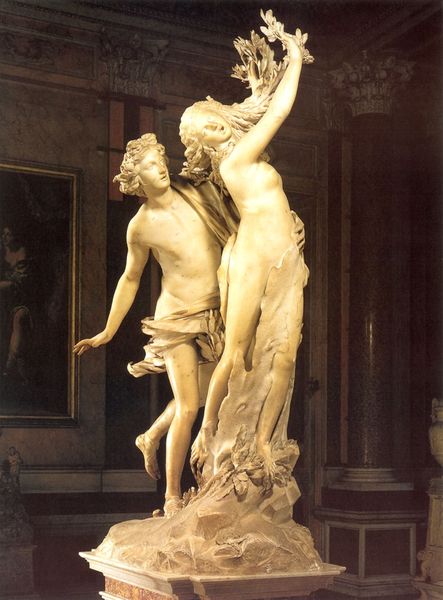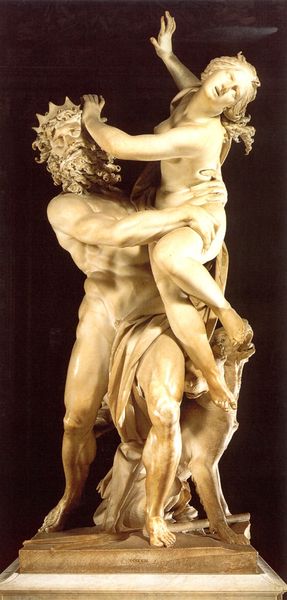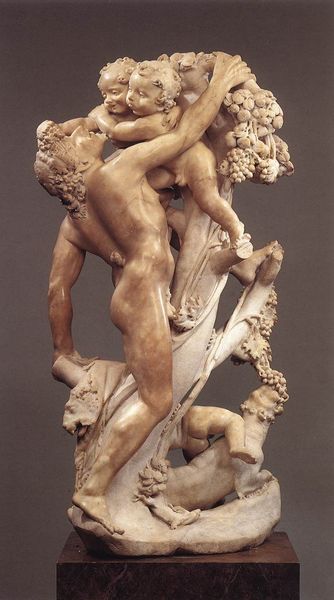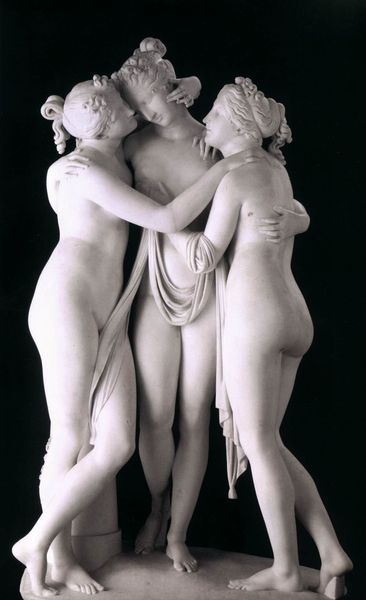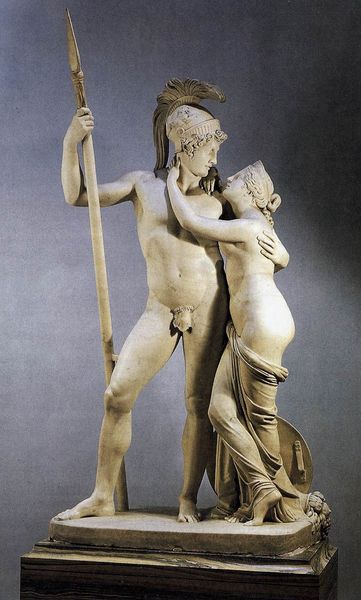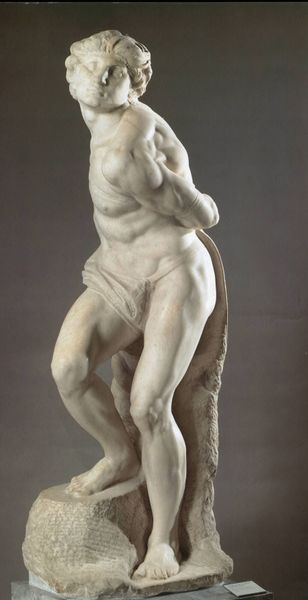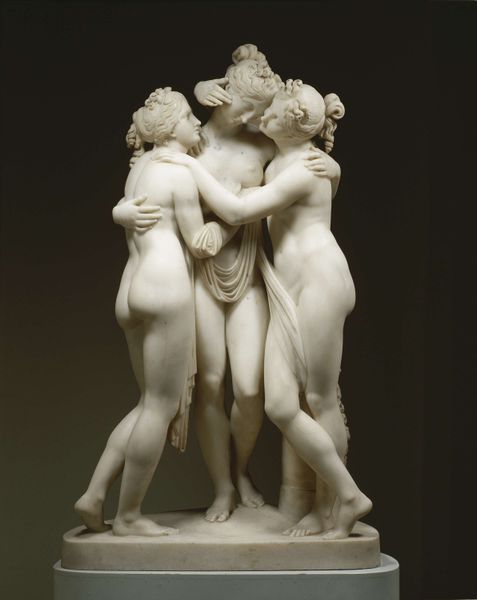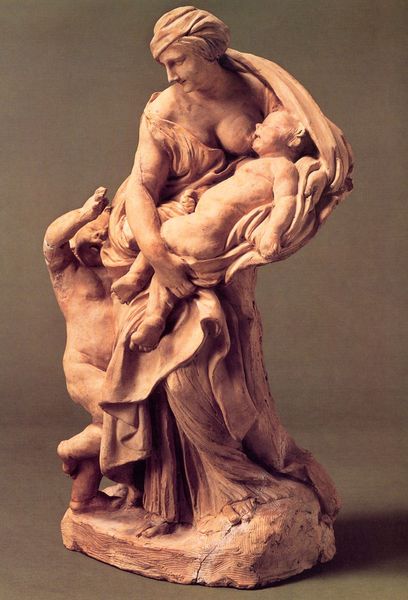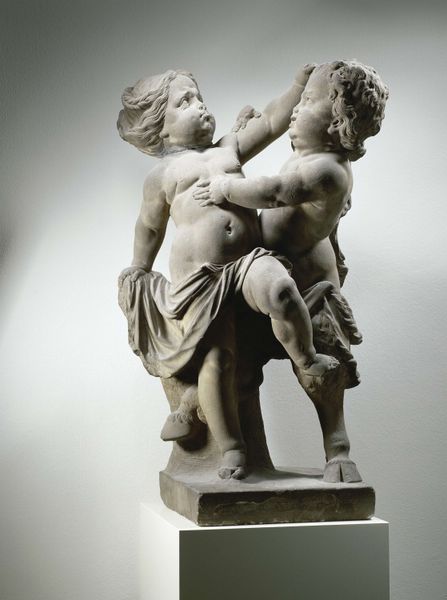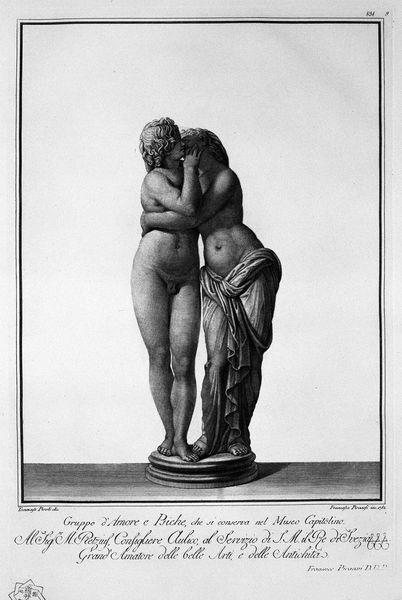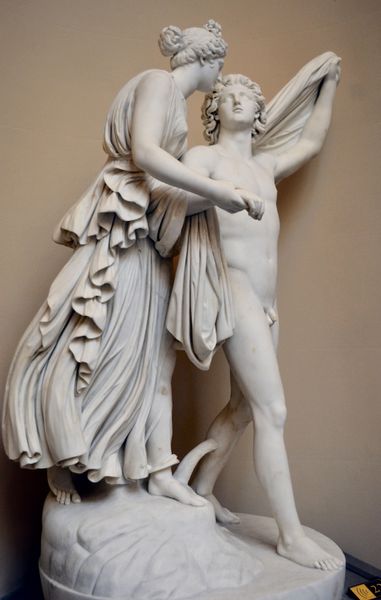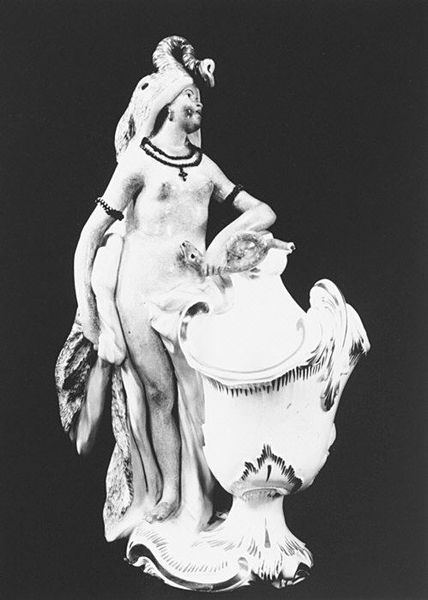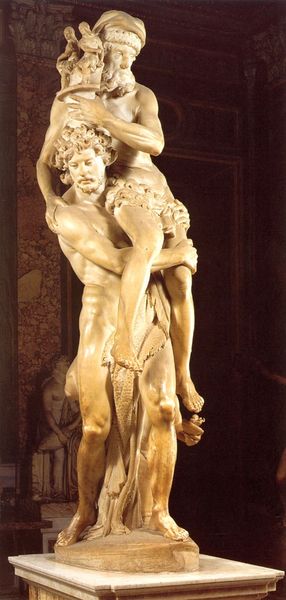
carving, sculpture, marble
#
portrait
#
neoclacissism
#
carving
#
sculpture
#
classical-realism
#
figuration
#
sculpture
#
romanticism
#
mythology
#
history-painting
#
marble
Copyright: Public domain
Curator: This exquisite sculpture is titled "Cupid and Psyche," carved in marble around 1800 by Antonio Canova. It’s immediately striking, wouldn’t you agree? Editor: Indeed. The interplay of lines and forms is quite masterful. I'm immediately drawn to the tender embrace; the figures intertwine to create a beautiful composition. What draws you in? Curator: Knowing Canova, a leading figure of Neoclassicism, the meticulous process becomes fascinating. Imagine the labor to extract, transport, and carve marble to this degree of lifelike quality. There’s an element of human effort against nature itself. Editor: And it is precisely this achievement—the manipulation of hard stone to resemble soft flesh and flowing fabric—that demands formal consideration. Note how Canova contrasts smooth, polished surfaces with delicately chiseled textures, creating areas of shadow and light that animate the sculpture. What do you make of the story behind the artwork, as its influence on form? Curator: It profoundly shifts our understanding. The Cupid and Psyche myth involves trials of love and beauty but is also laden with labor. Psyche had to complete dangerous, unfair tasks for Venus, motivated by familial devotion and, yes, love. This is embedded in the stone! This is how a sociohistorical element changes a reading of something as 'simple' as line and shadow. Editor: Yes, but notice also that through visual analysis, the embracing poses of the two characters create a series of interlocking diagonals that lend dynamism to the piece. Their joined hands form a focal point, guiding our eyes and emphasizing their emotional connection. The semiotic relationship between them implies so much. Curator: I would emphasize how class distinctions played out during the time. Here we are again in viewing artwork outside the pure aesthetics: Consider Canova’s patrons, likely aristocrats, and his own status as a respected artisan, shaped by his humble background. His workshop certainly employed many hands, with him leading a business enterprise alongside artistic output. All contribute to production and final interpretation. Editor: Undoubtedly, there's material context in play; the labor history informs our perspective. But ultimately, this composition's lasting impact stems from its formal resolution of balance, tension, and a profound expression of love. Curator: True. The tangible presence of "Cupid and Psyche" serves as both testament to human endeavor, and as visual spectacle for the time. Editor: Yes, and its visual beauty encourages multiple avenues of critical viewing, ensuring that its themes resonate, from mythological storytelling, down to human expression.
Comments
No comments
Be the first to comment and join the conversation on the ultimate creative platform.
